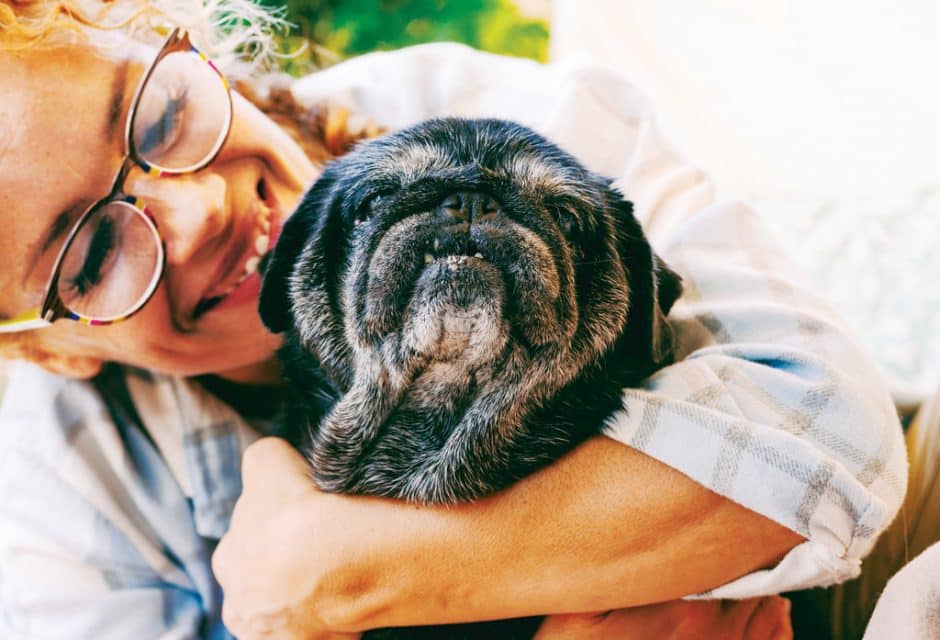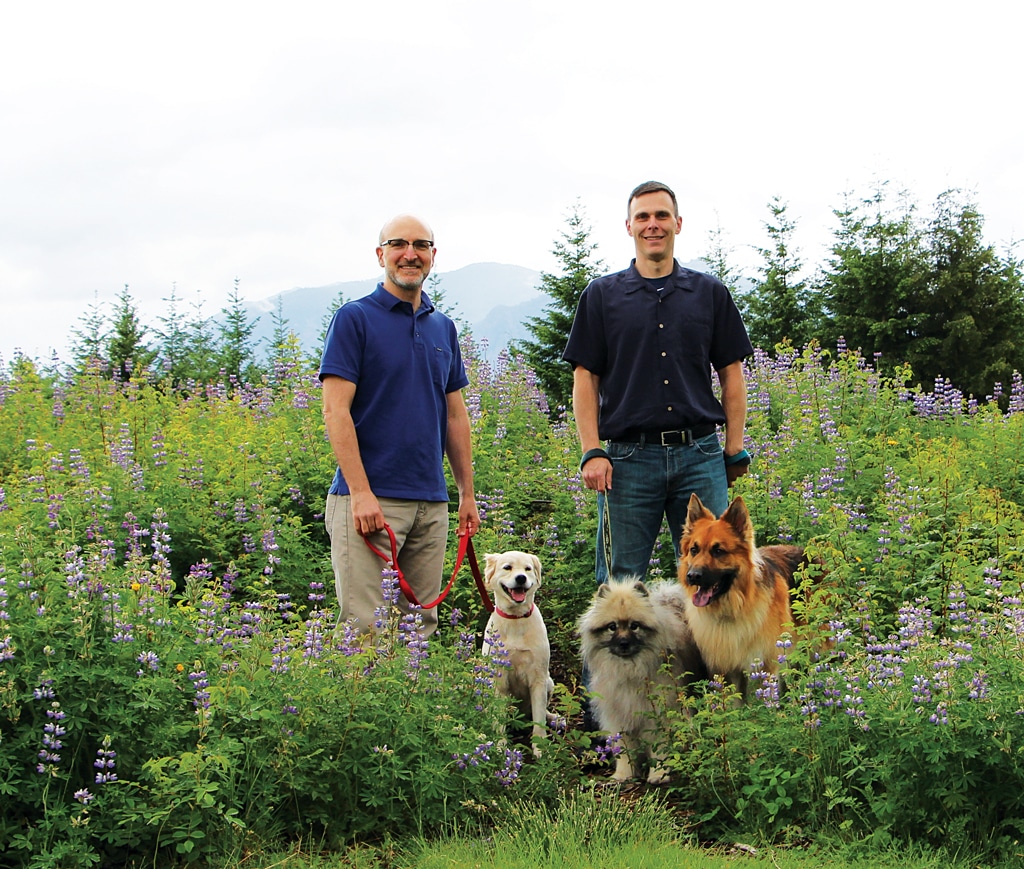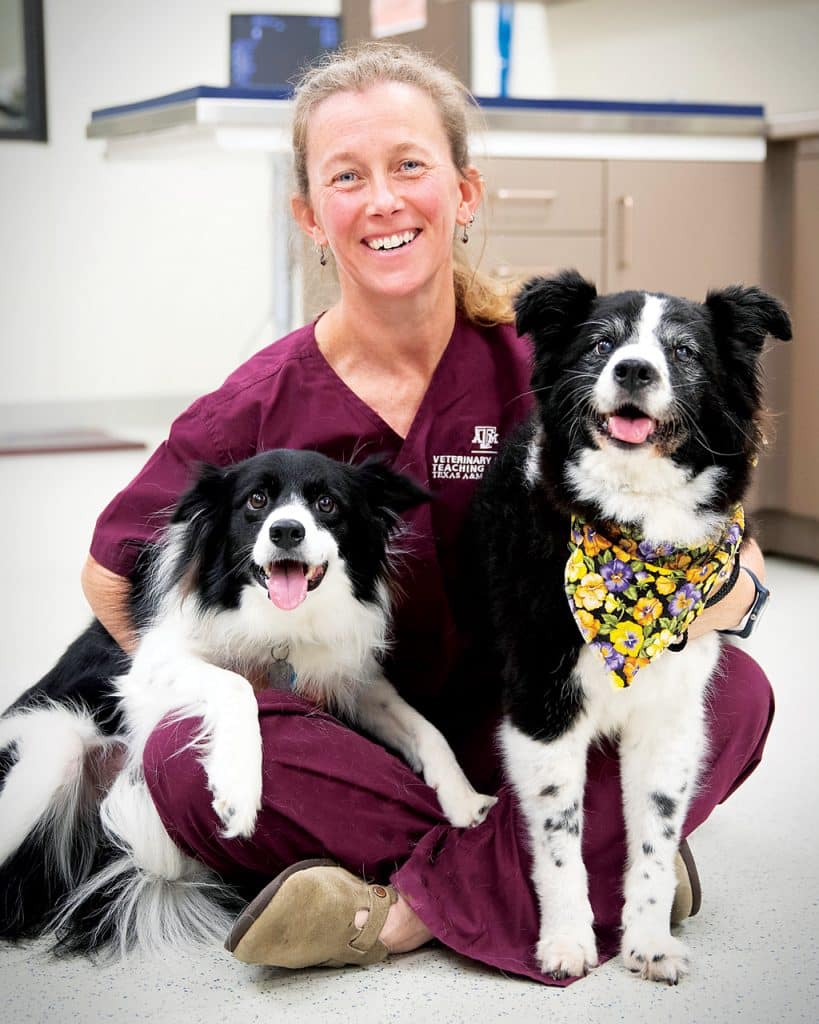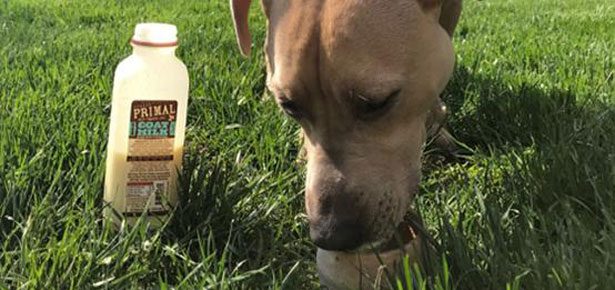

Secrets of Aging
Citizen scientists and their dogs take part in world’s largest dog study focused on healthy aging, breed traits, and more
If you love a dog long enough, you’ll notice they share some of the signs of aging that humans exhibit—like gray hair, decreased activity, and perhaps arthritis—yet at a more rapid pace. An ambitious new project is hoping to change that. The Dog Aging Project—with 50,000 participating dogs and counting—is looking into factors that affect dogs’ aging and their quality of life, or “healthspan” with the goal of improving both canine and human health longevity. It is the world’s largest and most ambitious dog study to date. And you can take part.
“The goal of the Dog Aging Project is to follow people’s dogs, dogs in people’s homes, for their entire lives to collect as much information as we can,” co-founder Daniel Promislow says in a project video. “By doing that, with the help of the owners who provide us with the data and samples, we can analyze—our goal is to understand how biology and environment shape healthy aging.”
Based at the University of Washington, this nationwide interdisciplinary longitudinal study is a collaboration of academic experts, veterinarians, and citizen scientists who volunteer information about their dogs every year. By following these dogs throughout their lives, project leaders hope to discover genetic and environmental links influencing how dogs age. The study has expanded to include multiple projects from epigenetic studies to trialing the anti-aging drug rapamycin.
Dogs are uniquely perfect for this kind of study. Like humans, dogs display nearly infinite variation in appearance, size, and behaviour. By extension, because dogs share their living environment with us, scientists may be able to make connections to human aging, too. Dogs may point the way to making changes that foster healthier human lifespans.
“We are studying the dog really for a variety of reasons, but mainly because the domestic dog is the most variable in how they look and act and in terms of age-related diseases,” says Brianah McCoy, a Dog Aging Project researcher and Ph.D. candidate at Arizona State University. “Dogs are one species, yet Chihuahuas are really distinct from Great Danes. We see the same thing in humans. You and your next-door-neighbour look very different.”

Photo Courtesy The Dog Aging Project
Founders Dr. Daniel Promislow and Dr. Matt Kaeberlein.
HOW IT WORKS
The project—staffed by approximately 120 scientists, students, and veterinarians from over 20 institutions—is entering its third year of research since it began gathering data in 2019.
“We have almost 50,000 dogs enrolled, and the goal is to get 100,000 dogs,” says McCoy. Currently the project is open to dogs of all ages and breeds, including mixed breeds, in the United States, but she says project leaders hope to secure additional funding to expand internationally.
When nominating a dog, participants fill out an extensive survey detailing health and lifestyle information about themselves and their pet. They may be invited to join specific study cohorts, which necessitate medical information and biological samples for study.
“Activities in those other studies,” says project co-founder Kate Creevy in a video interview, “might include cognitive games played with the dog to understand how they solve problems, as well as measurements of dogs’ bodies, and timing the dogs as they complete certain tasks, including jogging down the hallway or running up the stairs.”
Half of the biological samples gathered (which remain anonymous) are reserved for use by other scientists as the study has a commitment to open science.
The Dog Aging Project offers a unique social component that gamifies participation: you can opt to join the online “dog park” which offers up quick surveys, a place to connect to other participants, and exercises to try.
Michelle Dail, of Hampton, VA, signed up her Great Pyrenees mix Sloan, now four, to participate in the Dog Aging Project in 2021, and is now an admin for the online “dog park.”
“I’ve had ten dogs over the last 30 years, and lots have had health issues as they aged. I’ve become very interested in doing everything and anything I can to do help my dogs live healthier and happier lives.”
“When I saw the opportunity to be a citizen scientist for the Dog Aging Project, I was so excited.”
Dail, already following the latest news on dog health and trying holistic care and natural supplements, was thrilled to learn about the Dog Aging Project. “When I saw the opportunity to be a citizen scientist for the Dog Aging Project, I was so excited. I thought, I can help real scientists do the work.”
Dail and Sloan have participated in two studies so far, a cognitive and a mobility study. The cognitive study involved laying out three boxes in a prescribed layout, hiding a treat in one, circling the course on leash and then releasing the dog to see if he could find the treat.
“He’s got a big heart and a pea for a brain, but it’s not for lack of trying,” Dail says with affection. She says he’s still working on impulse control.
Nonetheless, Sloan succeeded seven or eight times out of ten, Dail recalls, saying she looks forward to watching his progress as they repeat the test each year.
For the second study, Dail took Sloan’s measurements, and then clocked him running upstairs in three rounds.
Dail enjoys having the virtual dog park as a resource. She says dog park members share information about their dogs’ behaviour and counsel each other through hard issues like canine cognitive disorder or the grief of a loved pet passing away.
The project includes four major areas of study, each with its own cohort: normative aging, or what it looks like for companion animals to healthfully age, genetic associations, exploring breed distinctions, an epigenomic study examining the effects of the environment on gene expression—which McCoy is working on—and the rapamycin trial dubbed TRIAD.
Rapamycin, traditionally used as an immunosuppressant, is approved by the Federal Drug Administration to prevent organ rejection in transplant operations. However, it has also been shown to delay or even reverse age-related symptoms in organisms from budding yeast and nematode worms all the way up to mice, and now perhaps even dogs.
“There’s really good evidence to support the idea that this particular intervention can either delay or reverse signs of aging in lots of different animals,” says co-director Matt Kaeberlein in a Dog Aging Project video. “So, the question we are particularly interested in asking is whether it will have that affect in dogs.”
Results from an initial trial of 24 dogs were encouraging, the American Animal Hospital Association reported in 2022. No side effects were noted, and treated dogs displayed improved heart function compared to those taking a placebo.
Collaborating with veterinarians is helping drive new best practices as well, McCoy says, citing the seeking of new measures of obesity and genetic pre-cursors for disease. Even at this early stage, the data is uncovering valuable new connections about our companion dogs.

Photo Courtesy The Dog Aging Project
Dr. Kate Creevy is a founder of and Chief Veterinary Officer for the Dog Aging Project at Texas A&M University.
WHAT WE KNOW SO FAR: Study Results
When It Comes to Personality, It’s Not About the Breed
In a linked project, a study published in Science by Kathleen Morrill debunked long-held ideas about breed-specific personality traits. Morrill was then a graduate student working in the lab of Dog Aging Project researcher Elinor Karlsson and now works on the Dog Aging Project herself. “Your dog’s breed doesn’t determine its personality,” McCoy says. “All dogs are distinct and products of their environments.”
So, if your Border Collie is hyper, or your Great Pyrenees is aloof, it’s probably a coincidence. This may have broader implications at a time where municipalities’ breed-specific legislation bans are being challenged.
Dogs Need Animals Other Than Humans
Just like humans, dogs are social animals, and the quality of their social lives can have a powerful impact on their healthspan, a study McCoy co-authored found. Looking at a sample of 21,410 dogs, several factors emerged in connection with dogs’ health, not all equally weighted. Overall, factors indicating household stability were helpful. Challenges with finances and access to resources were linked to poorer health. But spending time with other animals (dogs and other animals) was five times more likely to positively impact dogs’ health.
Notably being with their humans “did not come out as statistically significant,” McCoy says, making the analogy that for humans, having a companion animal is wonderful, but not the same as having human interaction.
Other findings were that older owners tended to have healthier dogs, which could be, she posited, because they might have more time and resources, and were less likely to move than younger owners.
“Dog parties are the takeaway,” notes McCoy. If your dog is a solo animal in the home, she suggests filling your dog’s schedule with scheduled playtime with a friend’s dog, or visits to a dog park or day care.
Consider Intermittent Fasting
Inspired by studies of time-restricted feeding with rats, another study McCoy co-authored revealed that feeding once per day was associated with measurably improved outcomes across several areas. The abstract says:
“…We found that dogs fed once daily rather than more frequently had lower mean scores on a cognitive dysfunction scale, and lower odds of having gastrointestinal, dental, orthopedic, kidney/urinary, and liver/pancreas disorders.”

Photo annaav/AdobeStock
“Spending time with other animals was five times more likely to positively impact dogs’ health.”
LOOKING AHEAD
Up next, the study is working to expand its diversity and accessibility by offering paper surveys, outreach into rural areas, and translating surveys into multiple languages.
McCoy thinks the study’s comprehensive and collaborative nature set it apart, giving it unique potential.
“We don’t exist in a vacuum,” she says. “It’s exciting to see something that mirrors that a little bit. It’s what I like to call holistic science, with realistic applications. I personally love the idea of doing more relatable science that can benefit the community.”
Dail is eagerly awaiting the study’s next results over time. For those of us who are really into our dogs’ health, there are a lot of questions,” she says, like the healthiest diet for longevity.
“I’m looking for any information they will give us. I know there will be something of benefit coming from this. I think it’s going to help dogs live longer, happier lives.”
If you live within the 50 US states (excluding US territories), you can apply to join the Dog Aging Project at dogagingproject.org.
This article originally appeared in the award-winning Modern Dog magazine. Subscribe today!
Join the newsletter and never miss out on dog content again!
"*" indicates required fields
By clicking the arrow, you agree to our web Terms of Use and Privacy & Cookie Policy. Easy unsubscribe links are provided in every email.





